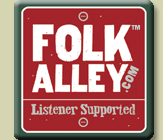I’ve watched since the spring after it happened to see what would replace the blackberry bramble, thick weeds and pine tree saplings that were burned by a small brush fire in the Edwin P. Griffin Preserve about four years ago. Fire crews were quick and the blaze, just north of the Cottonwood Trail, blacken no more than a fourth of an acre, but the flames left behind nothing but scorched earth and black ashes.
In Colorado Spartanburg
And I wasn’t disappointed. A few stalks of Broom Sedge (Andropogon virginicus) one of my favorite native grasses, popped out of the ground the summer after the fire. A few more followed during subsequent growing seasons.
This year Broom Sedge grows not only in most of he the burn zone, but a sizable population of this beautiful grass is now gracing the landscape across a small access road from the site, with other stand-alone stalks throughout the area.
Broom Sedge’s green summer stalks are not very striking because they get mixed in with neighboring plant life around them. But in the winter months, the tan tones of Broom Sedge change with the light. The sheaths appear copper-colored when they’re back lit by late-in-the-day sunlight. Other angles of light give the stalks orange-red or pale yellow hues.
This Broom Sedge population I’ve discovered covers less than just one of the 128 acres in the Edwin P. Griffin Preserve, but in this case, size doesn’t matter. To me, it’s a winter jewel. - Gary Henderson


 -
-




